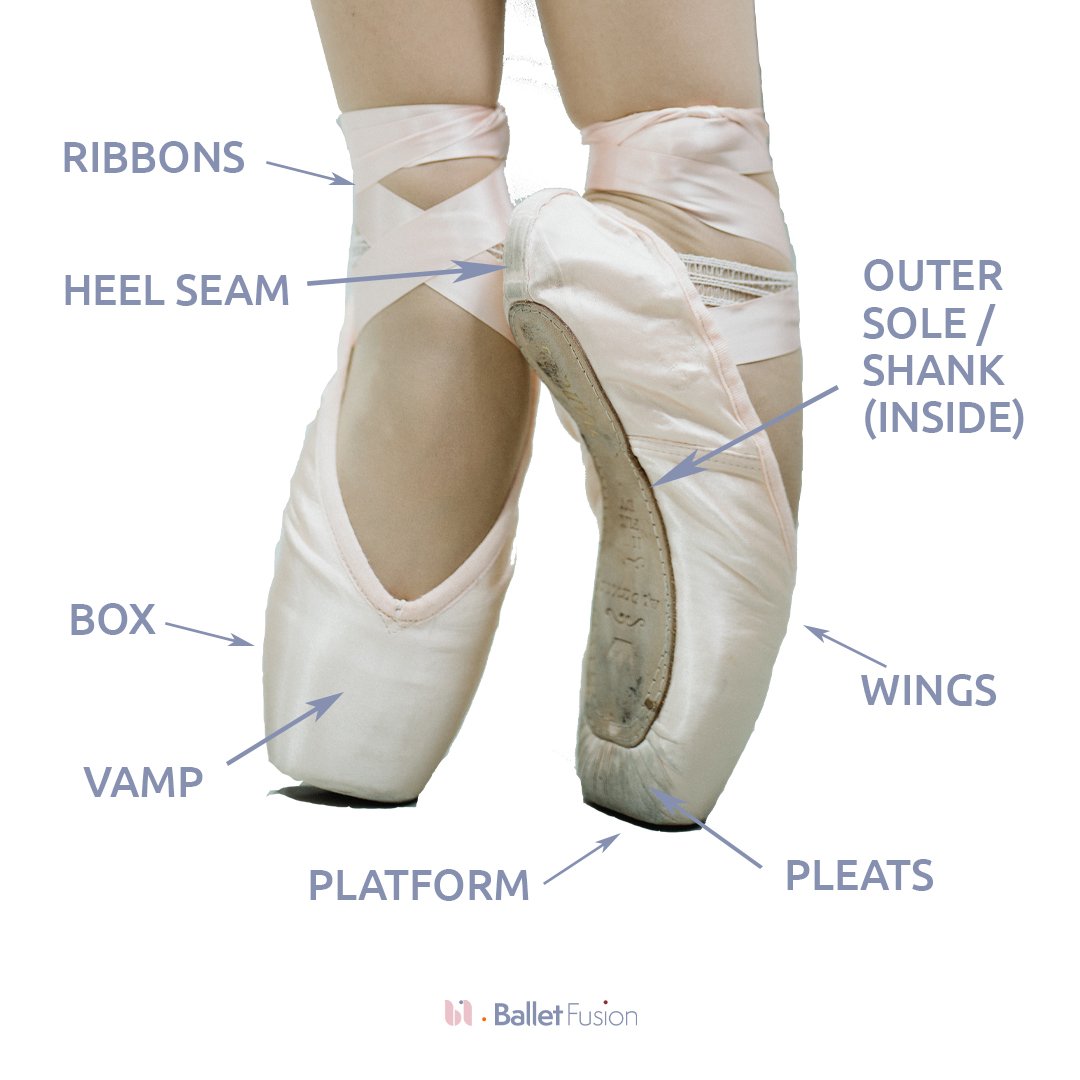The anatomy of a pointe shoe
As dancers, we are often told by professionals that our pointe shoes should fit to our feet like a snug pair of gloves and should be an extension of our foot (rather than feeling like a separate entity!) - and we can confirm, this is so true!
So, what exactly makes a pointe shoe so unique and specialised?
Well, everything boils down to the anatomy of the shoe, with great precision and skill needed to create the perfect pair.
You’ve probably noticed, there are a number of pointe shoe brands available to purchase around the world and if you’ve ever had pointe shoes professionally fitted, one brand can feel incredibly different to another brand; again, this is due to the anatomical structure of the shoe compared to your foot and explains why one brand may feel more comfortable/look better than another.
Let’s start by debunking a popular pointe shoe misconception!
A common myth we are often presented with is the concept of wood being used as a primary material to create the rigidity required to go en pointe; as many of you will probably know, this is untrue! Pointe shoes are internally made from a combination of packed layers of fabric, paper and cardboard, hardened by glue (often referred to as paste). The external materials used are satin, leather for the sole and cotton.
Here are some important parts of a pointe shoe:
The end part of the shoe (often described as the part where we ‘stand on our toes’!) is referred to as the platform which allows the dancer to balance and perform pointe work.
The box - encases the toes.
The vamp – covers the top of the foot and the metatarsals – depending on the structure of the foot, a dancer can request a low or high vamp. A low vamp is suitable for those with lower insteps which allows more flexibility in the front of the shoe. A high vamp is suitable for those with higher insteps which stops a dancer from feeling as though they are going to ‘fall out of the front of their shoe’ and provides more support. Both low and high vamps have an enclosed piece of circular drawstring elastic running throughout the whole shoe which enables a dancer to increase the tightness of the shoe and helps to prevent the shoe slipping off the back of the heel.
The shank – the insole of the shoe – professional dancers often modify their shoes by cutting off ¼ of the shank close to the heel in order to further increase flexibility of the shoe.
The outer sole – this is usually made from leather and is the part of the shoe which is in contact with the floor when the dancer is standing in a flat foot position. Newer versions of pointe shoes sometimes have split soles too!
The wings – each of the two symmetrical sides of the vamp, directed toward the heel.
The ribbons – A dancer must learn how to correctly tie ribbons in the classical ballet methodology, as this will ensure the shoe stays on the foot...plus it looks super pretty!
Thinking about getting your first pair of pointe shoes? Or a new pair? Read our blog post about the importance of getting pointe shoes professionally fitted.
Author: Alicia Rose Sandercock


